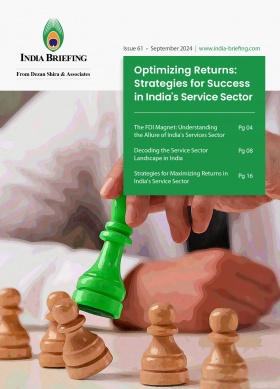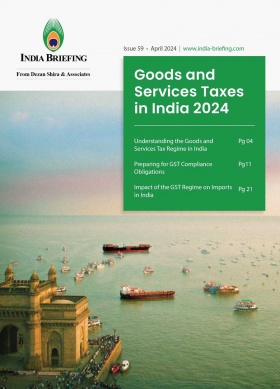India-New Zealand Bilateral Relations: A Strategic Partnership
India and New Zealand enjoy a long-standing, cordial relationship, with diplomatic ties dating to 1950. Initially, the two countries set up a Trade Commission that was later elevated to a High Commission in 1952. Today, the two countries engage across various sectors, including trade, education, and culture, overcoming geographic distance to build a mutually beneficial partnership.
As the fifth-largest economy globally and the most populous country, India’s significance in New Zealand’s trade landscape is on the rise. Recognizing this, the latter aims to strengthen ties with India, focusing on expanding trade and fostering deeper engagement in political, cultural, and economic areas.
Efforts to boost economic relations have seen cooperation between the private sector and New Zealand government agencies, with focus areas including horticulture, animal health in agriculture, education, and improving business relationships.
Although New Zealand and India entered Free Trade Agreement (FTA) negotiations in 2010, the last formal discussions occurred in February 2015.
Advancing bilateral relations
In April 2024, India and New Zealand held discussions to enhance their bilateral relationship during the 11th Joint Trade Committee (JTC) meeting. Both nations identified vast untapped potential for cooperation and agreed to expand their trade relations. The focus was on establishing a comprehensive economic framework, fostering collaboration in key sectors like agriculture, food processing, forestry, and pharmaceuticals. Improving the quality, storage, and transportation of kiwi fruit and bolstering the dairy sector were key points of discussion.
The meeting also addressed issues like market access, non-tariff barriers (NTBs), and sanitary and phytosanitary (SPS) measures on products such as grapes, okra, and mangoes. Both countries agreed to resolve these issues through constructive dialogue within the existing JTC framework. Additionally, discussions on a Mutual Recognition Arrangement (MRA) for organic products and simplifying vehicle approvals were also undertaken.
In a report published by the India New Zealand Business Council (INZBC) in June 2024, Patrick Rata, New Zealand’s High Commissioner to India, discussed strengthening bilateral ties with India by fostering high-level engagements, advancing trade, and enhancing collaboration across diverse sectors. This includes dialogues on defense, economic partnerships, and people-to-people connections.
Rata is said to have engaged with Indian government officials, business leaders, and associations like the India Oceania Business Association to promote New Zealand’s interests.
Strategic importance of IPEF for India and New Zealand
On June 6, 2024, India, alongside other Indo-Pacific Economic Framework for Prosperity (IPEF) members, participated in a ministerial meeting in Singapore, where significant agreements were signed. These included the Fair Economy Agreement and the IPEF Agreement, signed by New Zealand’s Trade Minister Todd McClay, and the Clean Economy Agreement, signed by Climate Change Minister Simon Watts. This followed New Zealand’s signing of the Supply Chain Agreement in November 2023.
While India’s presence at the first annual IPEF Clean Economy Investor Forum represented its ambition on sustainable infrastructure and climate technology, New Zealand Trade and Enterprise (NZTE) sent an investment mission with top climate tech companies and sustainable investors from New Zealand. The forum seeks to encourage collaboration between emerging climate tech companies and investors, and India’s growing market for clean energy and sustainable technologies make it a crucial global partner.
New Zealand has a strong presence in this domain, with several of its companies named in HolonIQ’s Indo-Pacific Climate Tech 100, a list that includes promising start-ups from the region.
Four agreements were reached during the forum and have now entered the Parliamentary Treaty Examination process in New Zealand. Once the review is completed, and New Zealand ratifies the agreements, they will take effect after 30 days following the ratification. This will further deepen India’s collaboration with New Zealand and other IPEF members.
What is the IPEF?
The Indo-Pacific Economic Framework for Prosperity or IPEF was launched on May 23, 2022, by leaders from 14 Indo-Pacific nations, including India, to enhance regional cooperation. Collectively, these 14 countries accounted for 40 percent of global GDP in 2021, emphasizing the strategic importance of India’s participation.
Led by the U.S., this initiative was formalized in a joint statement issued by leaders from the member countries, signaling the start of negotiations across four key pillars:
- Trade,
- Supply chains,
- Clean economy, and
- Fair economy
In September 2022, the initial scoping phase was completed, and India joined the broader negotiations across IPEF’s four pillars. Various rounds of negotiations took place between December 2022 and November 2023, with India actively engaged in discussions that align with its interests in the region.
India’s economic engagement with the Indo-Pacific is crucial, as over half of its exports go to this region, and it is home to a significant portion of the world’s population. India has a vested interest in helping shape a stable and economically integrated Indo-Pacific order, promoting inclusivity and sustainability.
India-New Zealand trade relations: An overview
India’s trade relations with New Zealand have experienced fluctuations in recent years. While India’s exports to New Zealand grew steadily between 2019 and 2023, they saw a slight decline in 2024. Meanwhile, imports from New Zealand have faced sharper fluctuations, particularly in commodities such as dairy products, iron and steel, and fruit.
| India-New Zealand Trade Figures Year-on-Year (Value in US$ Million) | |||||
|
Trade |
2019-2020 |
2020-2021 |
2021-2022 |
2022-2023 |
2023-2024 |
|
India’s exports to New Zealand |
378.55 |
486.25 |
487.60 |
547.84 |
538.33 |
|
Growth % |
|
28.45 |
0.28 |
12.35 |
-1.74 |
|
India’s import from New Zealand |
521.83 |
381.53 |
374.84 |
477.74 |
335.07 |
|
Growth % |
|
-26.89 |
-1.75 |
27.45 |
-29.86 |
|
Total |
900.38 |
867.78 |
862.44 |
1,025.58 |
873.40 |
|
Growth % |
|
-3.62 |
-0.62 |
18.92 |
-14.84 |
Source: Department of Commerce, Ministry of Commerce and Industry, GoI
|
India’s Exports to New Zealand (Value in US$ Million) |
|||
|
Commodity |
2022-2023 |
2023-2024 |
Growth % |
|
Fish and crustaceans, molluscs and other aquatic invertabrates. |
16.97 |
13.55 |
-20.19 |
|
Articles of apparel and clothing accessories, not knitted or crocheted. |
18.00 |
18.12 |
0.69 |
|
Mineral fuels, mineral oils and products of their distillation; bituminous substances; mineral waxes. |
88.80 |
54.97 |
-38.10 |
|
Other made up textile articles; sets; worn clothing and worn textile articles; rags |
33.78 |
36.60 |
8.35 |
|
Natural or cultured pearls,precious or semiprecious stones,pre.metals,clad with pre.metal and artcls thereof;imit.jewlry;coin. |
22.77 |
18.49 |
-18.82 |
|
Nuclear reactors, boilers, machinery and mechanical appliances; parts thereof. |
33.40 |
34.70 |
3.88 |
|
Pharmaceutical products |
52.71 |
67.51 |
28.08 |
|
Vehicles other than railway or tramway rolling stock, and parts and accessories thereof. |
22.33 |
17.26 |
-22.69 |
|
Miscellaneous edible preparations. |
5.93 |
8.71 |
47.00 |
|
Glass and glassware. |
3.51 |
5.71 |
62.47 |
|
Coffee, tea, mate and spices. |
8.60 |
11.01 |
28.02 |
|
Products of animal origin, not elsewhere specified or included. |
1.42 |
3.21 |
126.54 |
|
Wool, fine or coarse animal hair, horsehair yarn and woven fabric. |
1.15 |
4.88 |
325.49 |
Source: Department of Commerce, Ministry of Commerce and Industry, GoI
|
India’s Imports from New Zealand (Value in US$ Million) |
|||
|
Commodity |
2022-2023 |
2023-2024 |
Growth % |
|
Iron and steel |
35.03 |
39.12 |
11.69 |
|
Mineral fuels, mineral oils and products of their distillation; bituminous substances; mineral waxes. |
94.51 |
49.24 |
-47.91 |
|
Pulp of wood or of other fibrous cellulosic material; waste and scrap of paper or paperboard. |
119.03 |
14.18 |
-88.09 |
|
Albuminoidal substances; modified starches; glues; enzymes. |
25.31 |
23.26 |
-8.11 |
|
Aluminium and articles thereof. |
31.09 |
39.86 |
28.21 |
|
Dairy produce; birds’ eggs; natural honey; edible prod. Of animal origin, not elsewhere spec. Or included. |
1.26 |
0.57 |
-54.53 |
|
Edible fruit and nuts; peel or citrus fruit or melons. |
34.19 |
29.97 |
-12.34 |
|
Meat and edible meat offal. |
1.83 |
1.89 |
3.09 |
|
Nuclear reactors, boilers, machinery and mechanical appliances; parts thereof. |
26.63 |
10.18 |
-61.79 |
|
Optical, photographic cinematographic measuring, checking precision, medical or surgical inst. And apparatus parts and accessories thereof; |
11.04 |
12.59 |
14.01 |
|
Wood and articles of wood; wood charcoal. |
5.52 |
9.67 |
75.33 |
|
Wool, fine or coarse animal hair, horsehair yarn and woven fabric. |
38.69 |
38.41 |
-0.71 |
|
Organic chemicals |
3.75 |
6.47 |
72.44 |
Source: Department of Commerce, Ministry of Commerce and Industry, GoI
Surge in services trade
In the services sector, trade between India and New Zealand has grown significantly. In the June 2024 quarter, New Zealand exported services worth US$228.52 million to India, while imports from India amounted to US$95.89 million.
|
India’s Top Service Exports to New Zealand’s (June 2024 Quarter) |
||
|
Top services |
Description |
Value (NZD) |
|
1 |
Travel |
58,286,152 |
|
2 |
Telecommunications, computer, and information services |
15,886,000 |
|
3 |
Other business services |
11,987,000 |
|
4 |
Insurance and pension services |
3,861,432 |
|
5 |
Government services, n.i.e |
2,033,812 |
|
6 |
Charges for the use of intellectual property n.i.e. |
418,000 |
Source: New Zealand International Trade
|
India’s Top Service Imports from New Zealand (June 2024 Quarter) |
||
|
Top services |
Description |
Value (NZD) |
|
1 |
Travel |
202,622,388 |
|
2 |
Government services, n.i.e |
10,359,136 |
|
3 |
Telecommunications, computer, and information services |
576,000 |
Source: New Zealand International Trade
New Zealand’s “Opening Doors to India” policy
New Zealand’s efforts to strengthen ties with India have been ongoing, with the “Opening Doors to India” policy launched in 2011 as part of the NZ Inc. India Strategy. This strategy aimed to secure an FTA with India, but despite 10 rounds of negotiations between 2010 and 2015, progress has stalled. Key challenges in securing the FTA include structural differences in the two countries’ political economies, with sticky issues being New Zealand’s dairy exports and India’s high tariffs on agricultural products.
India-New Zealand double tax treaty
The India-New Zealand Double Taxation Avoidance Agreement (DTAA) treaty was signed in 1986, with an aim to promote cross-border trade and investment by providing tax relief and fostering economic cooperation between India and New Zealand.
Under the DTAA, both countries agree on specific tax rates for different types of income, such as dividends, interest, royalties, and capital gains. It ensures that taxpayers are either exempt from tax in one country or receive tax credits to avoid being taxed twice. The agreement also includes provisions to prevent tax evasion and ensure transparency in tax matters.
|
Recipient Country |
Withholding Tax Rates (%) on Certain Types of Income |
|||
|
New Zealand |
Dividend |
Interest |
Royalty |
Fee for technical services (10) |
|
15 |
10 |
10 |
10 |
|
Source: Income Tax Department, GoI
Strengthening ties through high-level visits
High-level diplomatic exchanges have played a critical role in advancing India-New Zealand relations. Most recently, Indian President Droupadi Murmu visited the country in August 2024. New Zealand’s engagements have been equally significant, such as Prime Minister John Key’s state visit in 2016 and Deputy Prime Minister Winston Peters’ visit in March 2024.
Scope of collaboration beyond trade
Despite the challenges in trade negotiations, there are several other areas where the two countries can collaborate. During the March 2024 visit of New Zealand’s Deputy Prime Minister and Foreign Minister to India, defense and maritime cooperation were identified as potential growth areas.
Regional security in the Indo-Pacific, naval visits, peacekeeping efforts, and collaboration in the South Pacific were also discussed as avenues for deepening ties. New Zealand has expressed interest in expanding its defense and bilateral engagements with India, aligning its approach to India more closely with that of Australia.
India-New Zealand recognizing lost business opportunities
In 2024, New Zealand Trade Commissioner and Consul General for India and South Asia, Graham Rouse, spoke on the growing opportunities for New Zealand tech companies in India. At a panel discussion organized by the INZBC, the trade commission noted that as India rapidly evolves into a digital economy, the potential for collaboration is vast, however, New Zealand businesses require a nuanced understanding of the local ecosystem.
Rouse also highlighted India’s significant digital transformation, noting the country’s large internet user base—over 880 million people—coupled with the highest smartphone data consumption globally. This shift has transformed India from an agrarian economy to one driven by technology and services, with the services sector now contributing three times more to GDP than agriculture. These factors present substantial opportunities for tech companies in New Zealand.
According to recent research from New Zealand Trade and Enterprise (NZTE) and Brand Finance’s Global Soft Power Index, India’s perception of New Zealand is improving, with its natural beauty, community values, and sustainability efforts resonating strongly. However, there is still room for New Zealand to promote its leadership in science, innovation, and technology more confidently and unlock greater business potential in India.
Conclusion
India and New Zealand are at a critical juncture in their bilateral relationship. While trade negotiations face hurdles, such as for agrimarket access, both countries have plenty of scope for commercial and economic collaboration across sectors like defense, healthcare, and the digital economy. As India continues to rise in global prominence, New Zealand has recognized the need to strengthen its ties with India, laying the groundwork for a multifaceted partnership that extends beyond trade.
About Us
India Briefing is one of five regional publications under the Asia Briefing brand. It is supported by Dezan Shira & Associates, a pan-Asia, multi-disciplinary professional services firm that assists foreign investors throughout Asia, including through offices in Delhi, Mumbai, and Bengaluru in India. Readers may write to india@dezshira.com for support on doing business in India. For a complimentary subscription to India Briefing’s content products, please click here.
Dezan Shira & Associates also maintains offices or has alliance partners assisting foreign investors in China, Hong Kong SAR, Dubai (UAE), Indonesia, Singapore, Vietnam, Philippines, Malaysia, Thailand, Bangladesh, Italy, Germany, the United States, and Australia.
- Previous Article Optimizing Returns: Strategies for Success in India’s Services Sector
- Next Article India and the Czech Republic: Trade and Investment Profile








